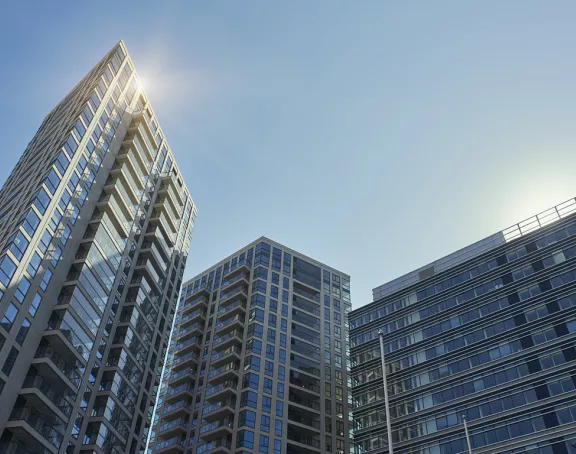Dutch Supreme Court answers prejudicial questions on the interpretation of the concept 'essentially new constructed real estate' for VAT purposes
On Friday 4 November 2022, the Dutch Supreme Court answered prejudicial questions of the Zeeland-West Brabant District Court on the interpretation of the concept of ‘essentially new constructed real estate’ (in wezen nieuwbouw) for Dutch VAT purposes. The prejudicial questions to Dutch Supreme Court concerned, in short, which criteria should be applied to determine whether essentially new real estate is constructed as a result of refurbishment works on an existing building. The Dutch Supreme Court ruled that only changes in the structural construction (bouwkundige constructie) of an existing building can lead to the conclusion that a refurbishment was so significant that essentially a new building is constructed. Other criteria, such as change in function, external recognizability and size of the investments made, may only be indications that the refurbishment was so significant that essentially a new building is constructed. However, these criteria (alone or together) are neither decisive nor necessary.
In this blog post Ashley Peeters and Johan Vrolijk describe the ruling of the Dutch Supreme Court, why the Dutch real estate market was looking forward to this ruling and the implications thereof.
Background
As a general rule, the transfer of real estate located in the Netherlands is exempt from Dutch VAT and subject to Dutch real estate transfer tax (‘RETT’; a 2% rate applies for owner-occupied homes and a 8% rate. increased to 10.4% as of 1 January 2023, applies to other real estate). As an exception, the transfer of, inter alia, real estate before, on or within two years after the real estate has been first put into use (‘new real estate’) is by operation of law subject to Dutch VAT and, provided certain condition are met, exempt from Dutch RETT.
Based on case law from the Dutch Supreme Court, the refurbishment of an existing real estate may be considered as new real estate if essentially a new real estate is constructed (in wezen nieuwbouw). This is relevant, because a transfer before, on or within two years after such essentially new constructed real estate has been first put into use is, by operation of law, subject to Dutch VAT (and, provided certain conditions are met, exempt from Dutch RETT). In addition, the initially deducted input VAT on the refurbishment costs may need to be recaptured at the end of the first book year in which the real estate has been first put into use and in each of the subsequent nine book years, respectively to the extent that deduction of input VAT is no longer possible at a later moment (e.g. if the real estate is used for VAT exempt purposes, such as a VAT exempt lease or sale).
Parties that can deduct their input VAT (e.g. investors in commercial real estate) therefore prefer to acquire real estate that is considered as essentially new constructed real estate, subject to VAT and exempt from RETT (the real estate is then effectively acquired tax-free). Parties that cannot deduct their input VAT (e.g. investors in healthcare real estate or residential real estate) prefer to acquire existing real estate, exempt from VAT and subject to RETT.
The interpretation of the concept ‘essentially new constructed real estate’ is highly fact-specific and depends on the circumstances of each individual case. The following criteria are applied in practice to interpret this concept:
- the change in structural construction;
- the change in building identity/external recognizability
- the change in function; and
- the investments made and/or capital gains realized through the refurbishment.
In practice, these criteria often prove difficult to apply and may result in discussions with the Dutch tax authorities regarding the qualification of (the result of) refurbished real estate. Also, the courts seem to interpret this concept differently. For instance, on 5 March 2020 the Court of Appeal in ‘s Hertogenbosch at the same date ruled differently in respect of the redevelopment of a former postal office (considered essentially new constructed real estate) and a former woolen fabrics factory (not considered essentially new constructed real estate), respectively.
Prejudicial questions
The case at hand concerned the transfer of two adjacent monumental buildings that were previously an office building, which were transformed into a hotel. In short, the refurbishment work consisted of completely stripping the inside of the buildings, the replacing the office spaces by hotel rooms, making sanitary modifications and installing a sprinkler system and a new heating system. No changes were however made to the existing construction of the buildings (the roof, floors, stairs, ceilings and lifts have not been removed or replaces), nor did the external recognizability of the buildings change.
The acquirer took the position that the refurbishment works resulted in essentially new constructed buildings and the transfer of the refurbished building is subject to VAT and exempt from Dutch RETT. According to Dutch tax authorities, the refurbishment did not result in new constructed buildings and the transfer of the refurbished buildings is exempt from VAT and subject to Dutch RETT.
The District Court considered that case law has not provided an uniform interpretation of the concept ‘essentially new constructed real estate’ and believes that the Dutch Supreme Court would do the legal practice a service by providing clarity on the legal assessment framework to be used for that concept. The District Court therefore asked a preliminary ruling on (1) the criteria to be applied in the qualification of a refurbished real estate as ‘essentially new constructed real estate’ and (2) the weight to be given to those criteria in abstract, both in terms of necessity of each criteria as such and the relative weight of the various criteria.
Supreme Court ruling
According to the Dutch Supreme Court the ‘essentially new constructed real estate’ concept expresses nothing other than that the result of the refurbishment should be capable of being equated with a newly constructed building.
To determine whether the refurbishment work on an existing building leads to an essentially new constructed building, it is necessary to determine what happened to the existing building from a structural point of view. Only changes to the structural construction (bouwkundige constructie) of a building, including replacement (of part) of the existing structural construction, can in the opinion of the Dutch Supreme Court justify the conclusion that a refurbishment was so significant that essentially a new building is constructed. Whether the changes made have been so significant, depends on the circumstances of the case. According to the Dutch Supreme Court, a refurbishment of an existing building will therefore not be that easily be considered so significant that an essentially new building is constructed.
Other criteria, such as change in function, external recognizability and size of the investments made and/or capital gains realized through the refurbishment, may only be indications that the refurbishment was so significant that essentially a new building is constructed. However, these other criteria (alone or together) are neither decisive nor necessary.
Relevance for the Dutch real estate market
The answers of the Supreme Court clarify that changes made to the structural construction of a building are essential for the qualification as 'essentially new constructed real estate'.
This implies that an existing building that is completely refurbished without amending the structural construction of that building remains an existing building for VAT purposes (exempt from VAT and subject to RETT). On the other hand, if the structural construction of an existing building is amended this does not automatically mean that this always leads to an essentially new constructed building for VAT purposes. It will also be relevant that the amendments made to the existing building are ‘so significant’ that the refurbished building can be equated with a new building.
The ruling does not make it clear when amendments made are considered ‘so significant’ that a refurbished building can be equated with a new building. Such assessment therefore remains highly dependent on the relevant facts and circumstances and should be made on a case-by-case basis. Discussions with the Dutch tax authorities on the qualification of a refurbished building for VAT purposes may therefore still arise. Given the financial impact, parties may consider, where possible, to request for advance conformation from the Dutch tax authorities.
It is noted that this Friday (11 November) the Dutch Supreme Court will issue a ruling in respect of the refurbishment of (part of) a former wool fabric factory. The refurbishment costs were a significant amount (approx. 10 times the purchase price), several amendments were made to the load-bearing structure (e.g., removal of all interior walls with a load-bearing function, renewal of the roof while retaining its characteristic shape, installing new steal structures to increase the required load-bearing capacity for the new roof and largely renewing the floor) and there was a change in function (factory into retail center). It will be interesting to see whether that new ruling will give more indications how this ruling should be applied on a specific case.
Should you have any questions, or need help in assessing whether an envisaged refurbishment of an existing building may result in an essentially new constructed building, please feel free to contact us.


